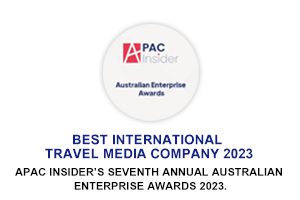 The hospitality industry has undergone a profound digital transformation, revolutionising venues’ operations. In the face of existential threats, many businesses adopted technology en masse over the past three years. However, relying on multiple best-in-breed solutions was a short-term survival strategy rather than a path to long-term success.
The hospitality industry has undergone a profound digital transformation, revolutionising venues’ operations. In the face of existential threats, many businesses adopted technology en masse over the past three years. However, relying on multiple best-in-breed solutions was a short-term survival strategy rather than a path to long-term success.
Today, it is clear that a unified and integrated approach to technology is essential for sustainable growth in the hospitality industry. Imagine every aspect of your operations, from payments to bookkeeping and inventory management, working in harmony rather than independently. This unified approach is the key to unlocking the full potential of technology.
But what exactly is a unified approach to technology in hospitality? Why is it crucial to avoid ‘silos’? And what are the benefits for the hospitality industry?
Understanding the unified approach.
A unified or ‘embedded’ approach to technology is one in which different tools, apps and processes are connected, allowing the flow of information. Consider the crucial aspects of a hospitality establishment’s payments and point-of-sale (POS) software. By adopting an embedded payments solution that integrates seamlessly with the POS system, businesses can streamline transactions, automate recording processes, and eliminate the need for manual data entry. This leads to faster and more efficient checkouts, minimises human errors, and frees up valuable time previously spent on administrative tasks.
Because it’s linked directly with your POS system, an embedded payments solution provides data related to reporting, inventory, analytics, and other software your POS uses. Whether for online or in-person transactions, having an embedded payment processing system ensures a seamless experience for guests, eliminating the need to redirect them to third-party websites or apps. By eradicating technology silos, hospitality businesses gain enhanced visibility into their operations, preserve data integrity, optimise resource allocation, and strengthen guest experiences and data security.
The dangers of technology silos.
The advantages of adopting a unified approach to technology in the hospitality industry extend far beyond streamlined checkouts. By tightly integrating POS and payment solutions, businesses can quickly implement features such as digital ordering or loyalty programs, fostering stronger guest connections and ultimately driving revenue growth. As checkout plays a pivotal role in guest satisfaction, the seamless and efficient experience delivered through unification enhances customer loyalty and amplifies revenue potential.
Unifying technology solutions offers tangible benefits. It consolidates hardware and software under a single vendor, which can result in cost savings for the business. Working with fewer vendors streamlines service and support, presenting opportunities for increased efficiency and accelerated growth. Furthermore, the automatic integration of dine-in and online order sales data with overhead costs like inventory and staff added into accounting software simplifies bookkeeping, eliminating the need for manual transaction entry. This automation saves time and ensures accurate and up-to-date financial records, particularly during the busy tax season.
Moreover, unified solutions’ improved reporting and enhanced security empower hospitality businesses to work smarter and safer than ever. By eliminating the complexities and inefficiencies of siloed systems, they can focus on strategic decision-making, operational excellence, and delivering exceptional guest experiences.
The benefits of unification.
In a dynamic and fiercely competitive hospitality landscape, embracing a unified and connected approach to technology is no longer a luxury but a necessity. By leveraging the power of technology integration, hospitality businesses can unlock new levels of operational efficiency, guest satisfaction, and revenue growth. From streamlining checkouts to automating processes and enhancing data security, a unified future awaits those who embrace the transformative potential of integrated technology.
Written By Andrew Fraser, Managing Director, APAC at Lightspeed





















